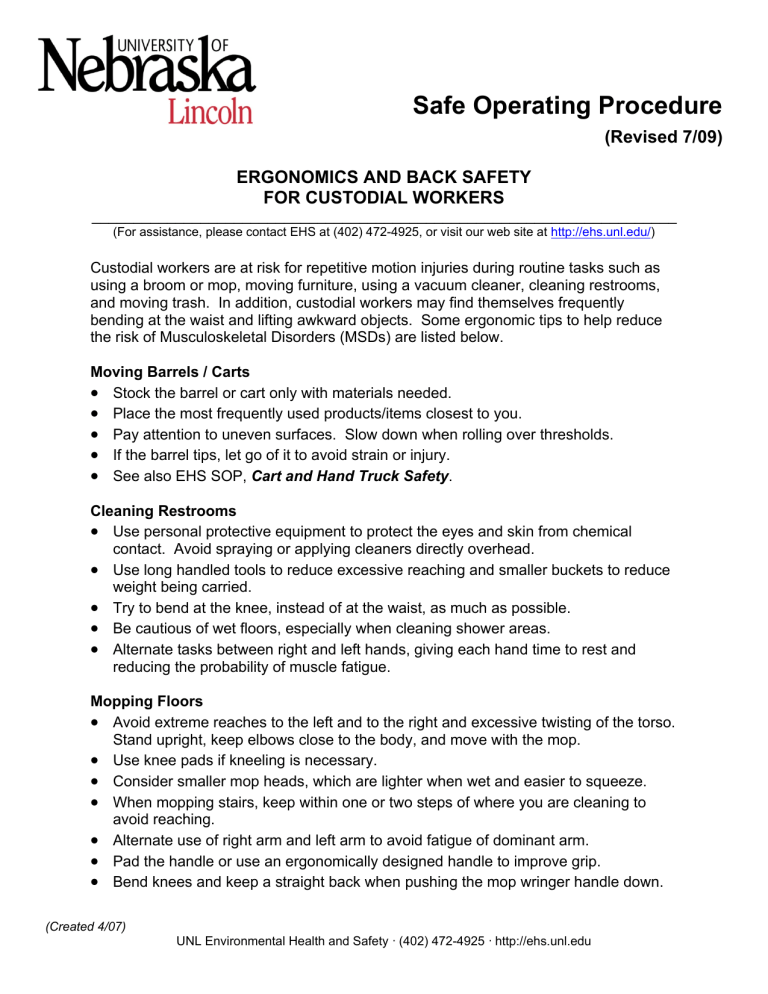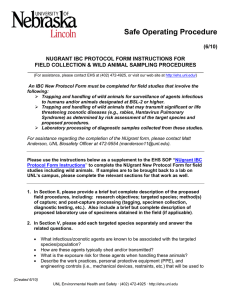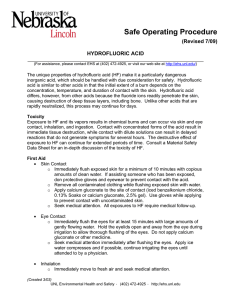Safe Operating Procedure (Revised 7/09) ERGONOMICS AND BACK SAFETY FOR CUSTODIAL WORKERS

Safe Operating Procedure
(Revised 7/09)
ERGONOMICS AND BACK SAFETY
FOR CUSTODIAL WORKERS
______________________________________________________________________
(For assistance, please contact EHS at (402) 472-4925, or visit our web site at http://ehs.unl.edu/ )
Custodial workers are at risk for repetitive motion injuries during routine tasks such as using a broom or mop, moving furniture, using a vacuum cleaner, cleaning restrooms, and moving trash. In addition, custodial workers may find themselves frequently bending at the waist and lifting awkward objects. Some ergonomic tips to help reduce the risk of Musculoskeletal Disorders (MSDs) are listed below.
Moving Barrels / Carts
•
Stock the barrel or cart only with materials needed.
•
Place the most frequently used products/items closest to you.
•
Pay attention to uneven surfaces. Slow down when rolling over thresholds.
•
If the barrel tips, let go of it to avoid strain or injury.
•
See also EHS SOP, Cart and Hand Truck Safety .
Cleaning Restrooms
•
Use personal protective equipment to protect the eyes and skin from chemical contact. Avoid spraying or applying cleaners directly overhead.
•
Use long handled tools to reduce excessive reaching and smaller buckets to reduce weight being carried.
•
Try to bend at the knee, instead of at the waist, as much as possible.
•
Be cautious of wet floors, especially when cleaning shower areas.
•
Alternate tasks between right and left hands, giving each hand time to rest and reducing the probability of muscle fatigue.
Mopping Floors
•
Avoid extreme reaches to the left and to the right and excessive twisting of the torso.
Stand upright, keep elbows close to the body, and move with the mop.
•
Use knee pads if kneeling is necessary.
•
Consider smaller mop heads, which are lighter when wet and easier to squeeze.
•
When mopping stairs, keep within one or two steps of where you are cleaning to avoid reaching.
•
Alternate use of right arm and left arm to avoid fatigue of dominant arm.
•
Pad the handle or use an ergonomically designed handle to improve grip.
•
Bend knees and keep a straight back when pushing the mop wringer handle down.
(Created 4/07)
UNL Environmental Health and Safety · (402) 472-4925 · http://ehs.unl.edu
Trash Removal
•
When removing trash, bend at the knees and keep back straight.
Make several trips if necessary; don’t try to carry everything at once.
•
Try to keep trash bag or can out of “danger zone” (above head or below knees).
•
Whenever possible, alternate hands to pick up and lower trash receptacles.
•
Drill holes at bottom of trash can to reduce bag suction when removing it.
•
Do not stoop over to reline trash cans. Instead, bend at the knees and try to maintain a straight back posture.
Vacuuming
•
Alternate use of right arm and left arm to avoid fatigue of dominant arm.
•
Do not twist your torso or excessively reach when cleaning. Move with the vacuum.
•
Move furniture and then vacuum. Do not do both at the same time.
Storage Closets
•
Store heavy items on middle and lower shelves. When retrieving heavy items, lift with your legs.
•
Store frequently used items on middle shelves. This will keep items out of the
“danger zone.’
•
Store lightweight and infrequently used items on top shelves.
General Tips
•
Do not carry stacked items that obstruct view.
•
Avoid jerky movements when moving and carrying materials.
•
If a box or object is too heavy, reduce the load by putting items into smaller boxes, use a cart or dolly, or team lift (if possible). See the EHS SOP,
General Material Handling/Safe Lifting .
•
Obtain ergonomic tools or retrofit existing tools to fit the user. For example, use larger handles on items, such as buckets (see photo at right).
•
Avoid awkward postures and instead maintain a comfortable posture, keeping the natural curve of the spine in place. Avoid static positions when standing for long periods of time or stooping over.
•
Wear shoes with good support and cushioning that have non-skid soles to help prevent slipping.
•
Stretch at the beginning and throughout the workday.
(Created 4/07)
UNL Environmental Health and Safety · (402) 472-4925 · http://ehs.unl.edu



